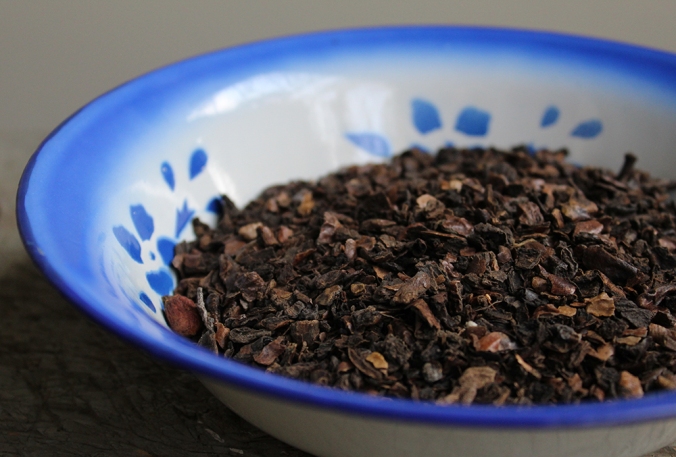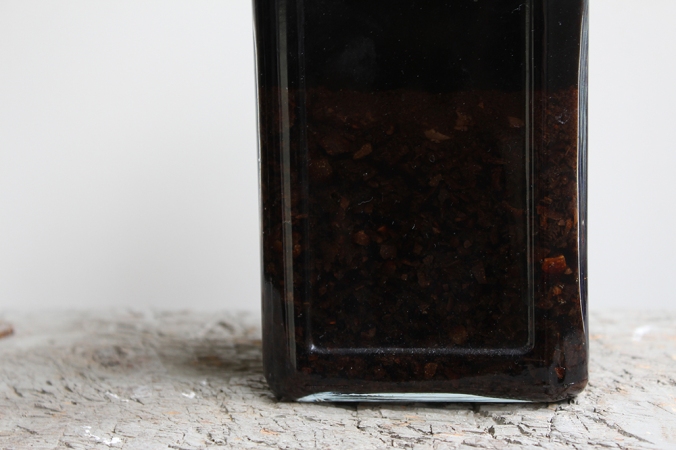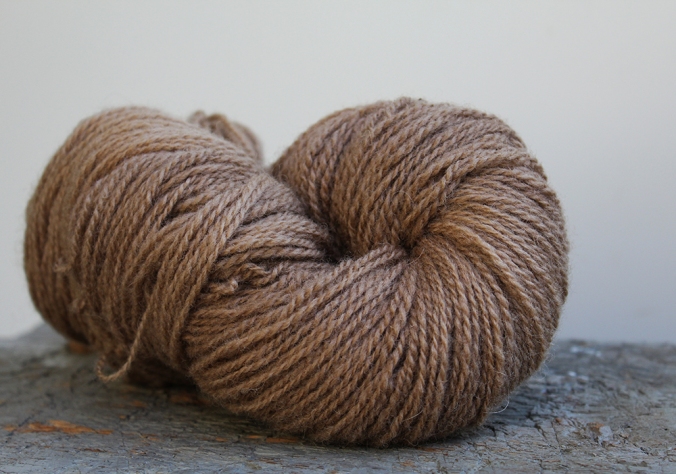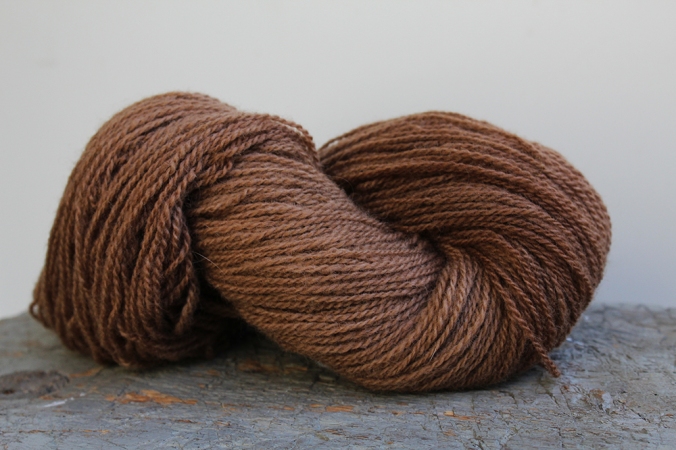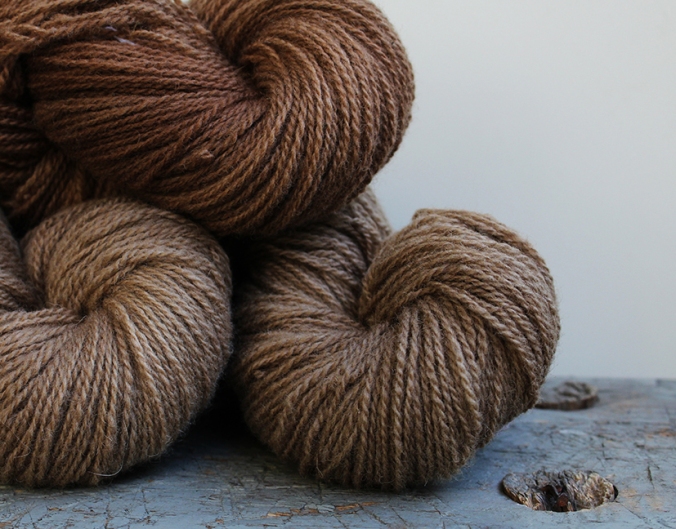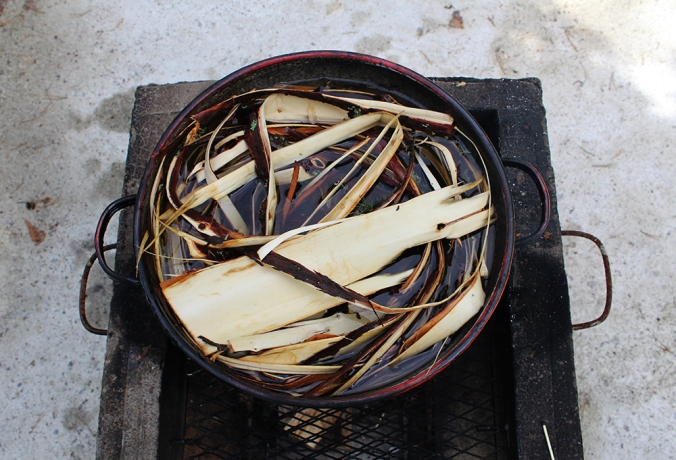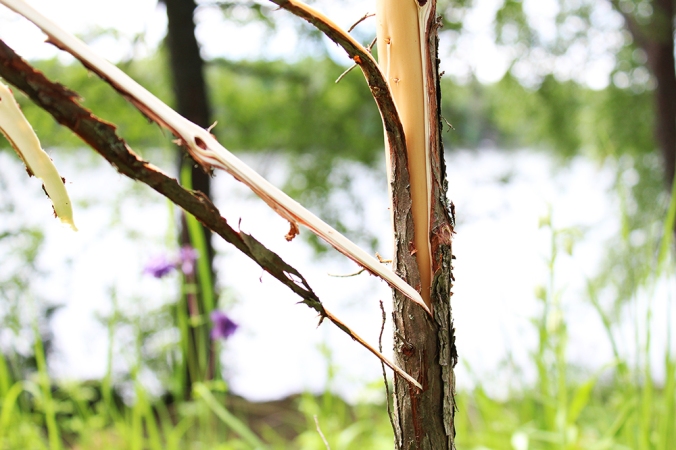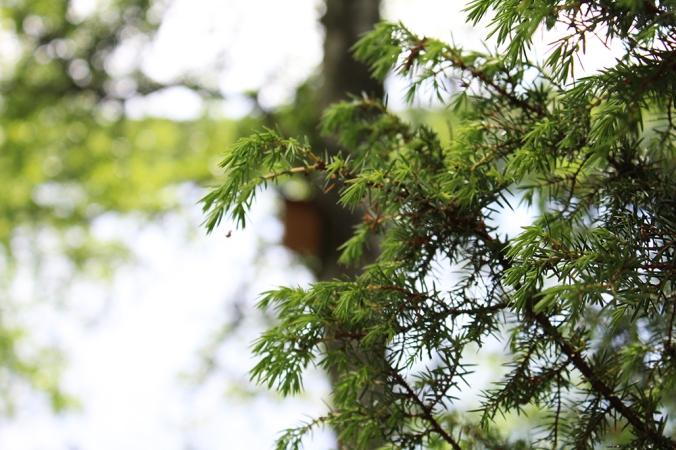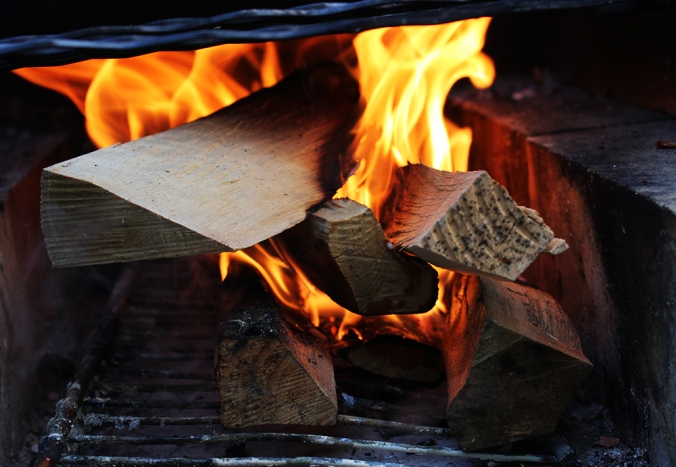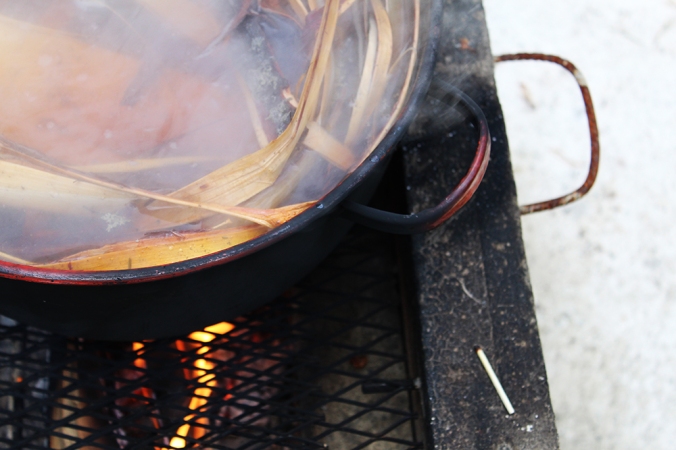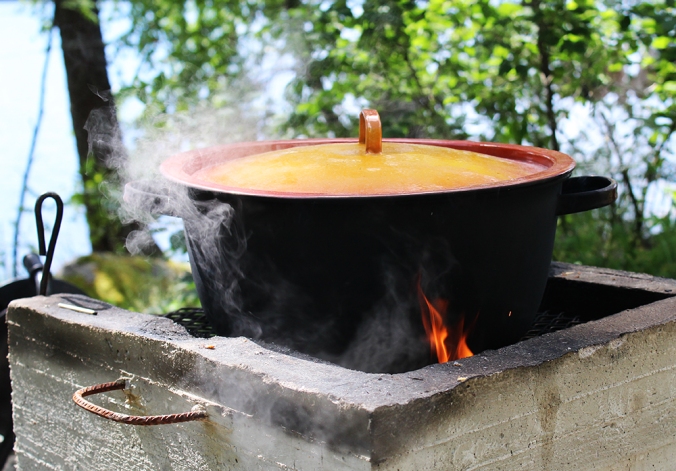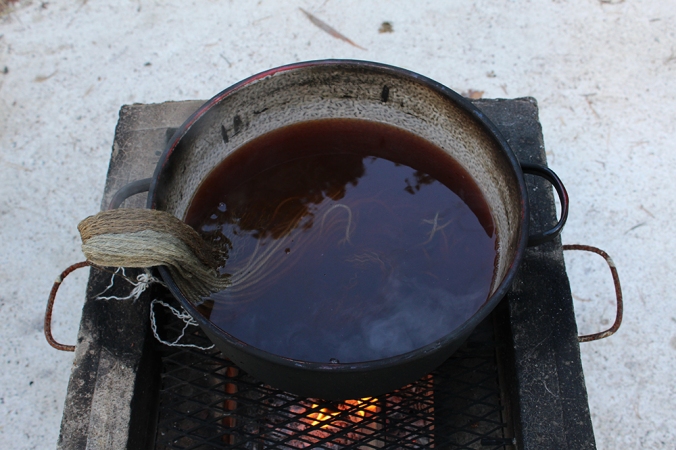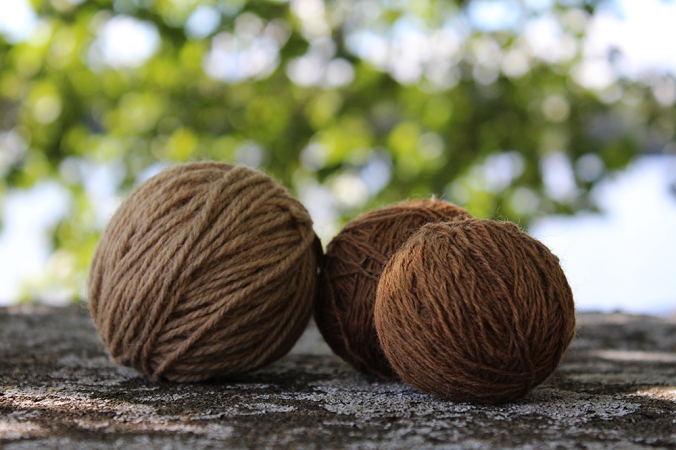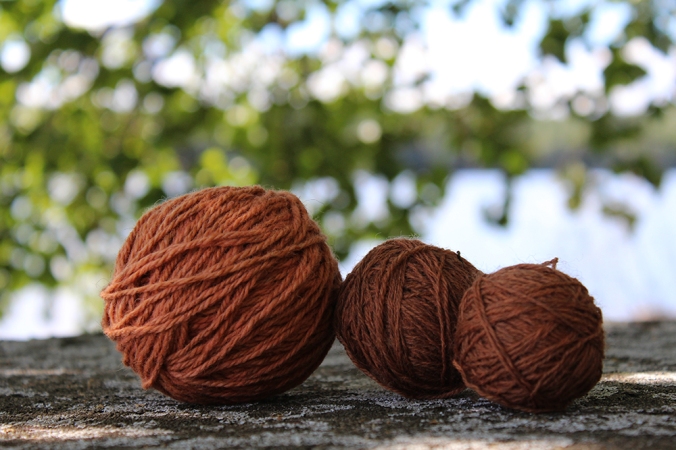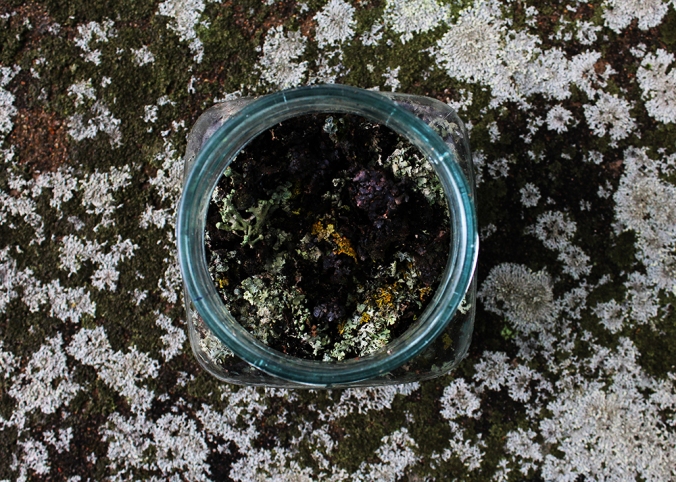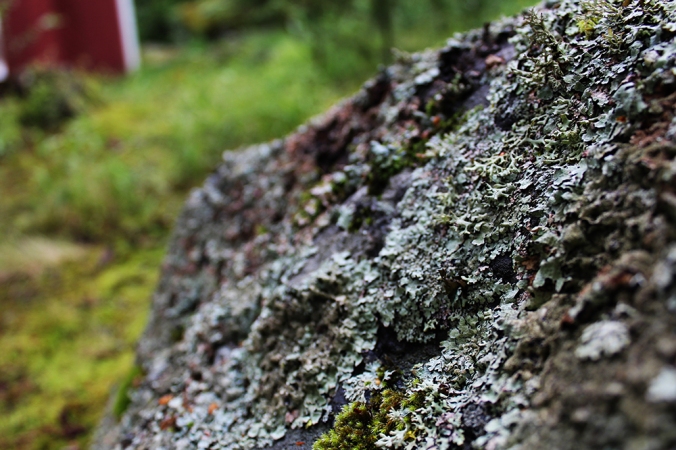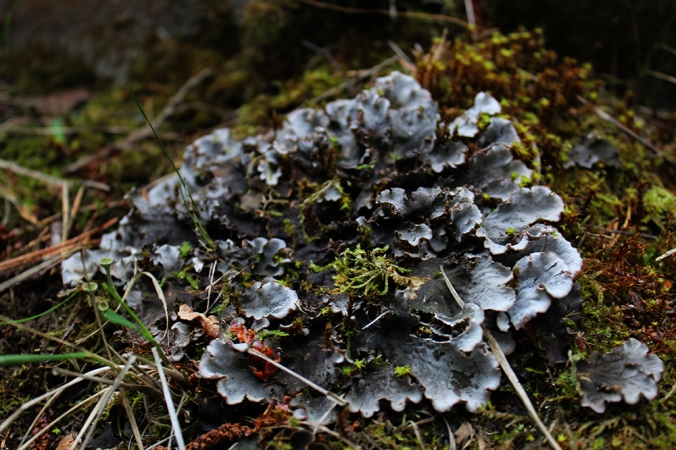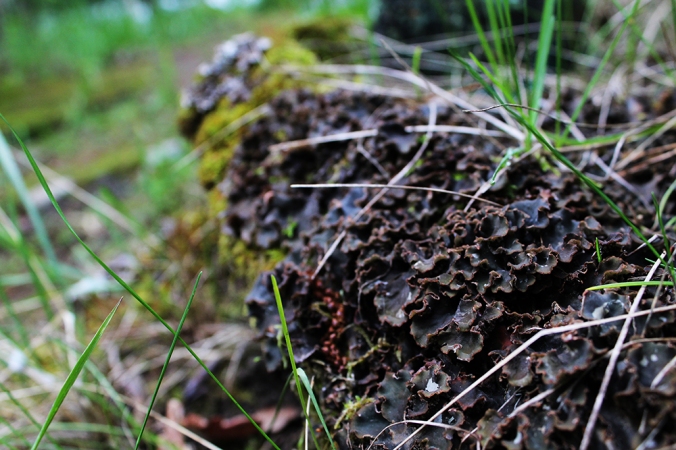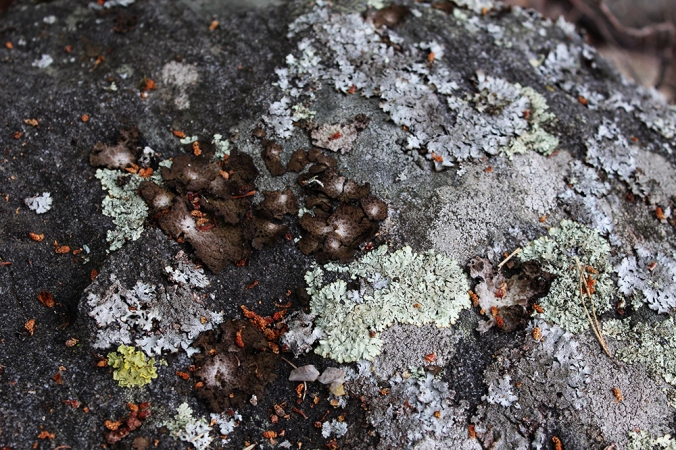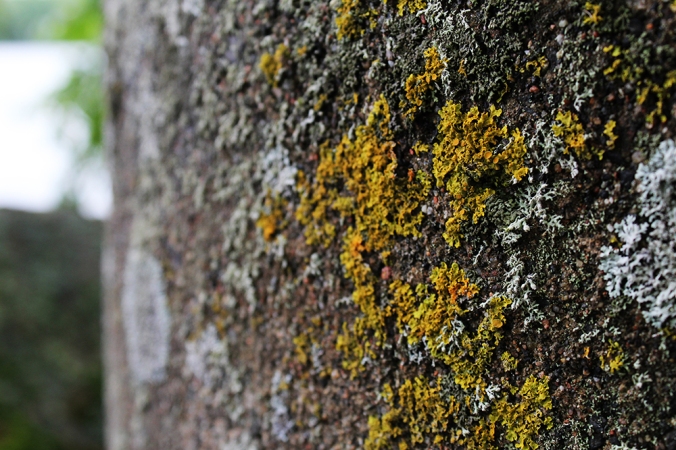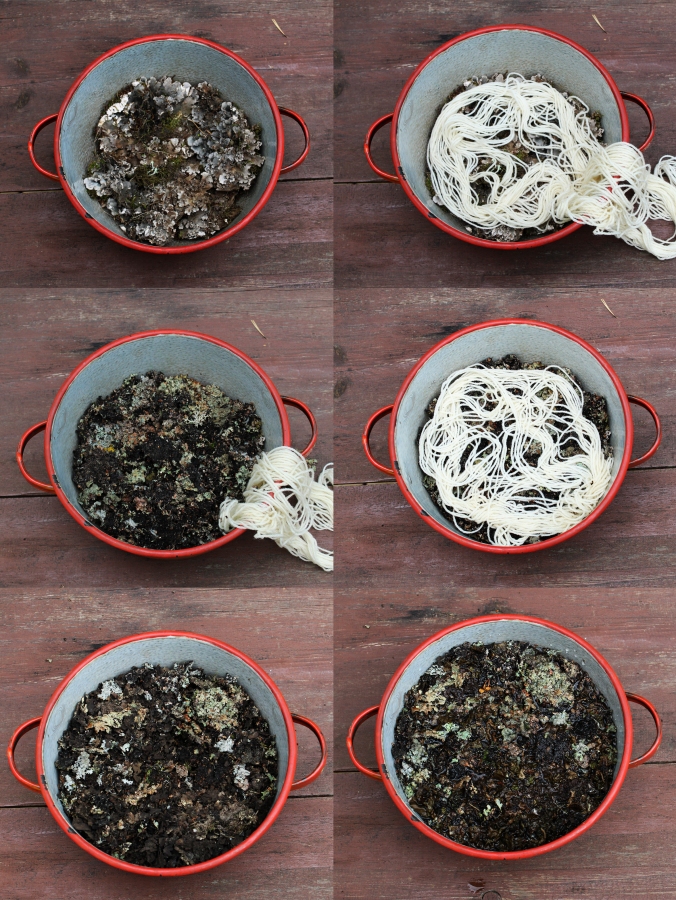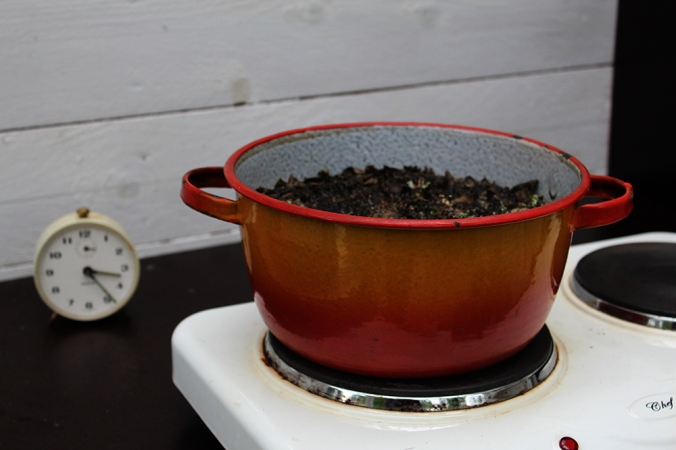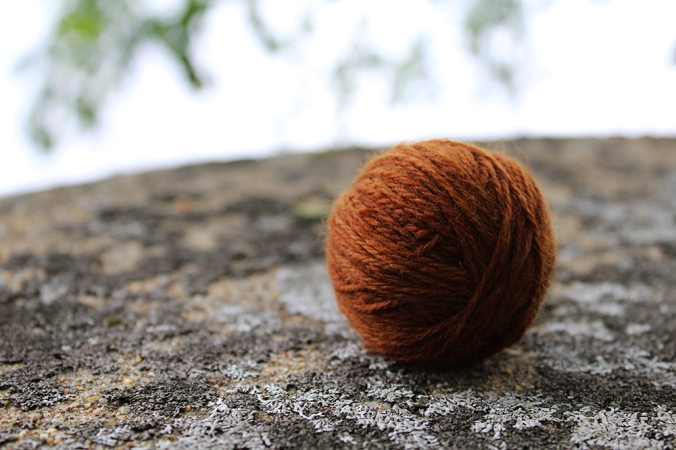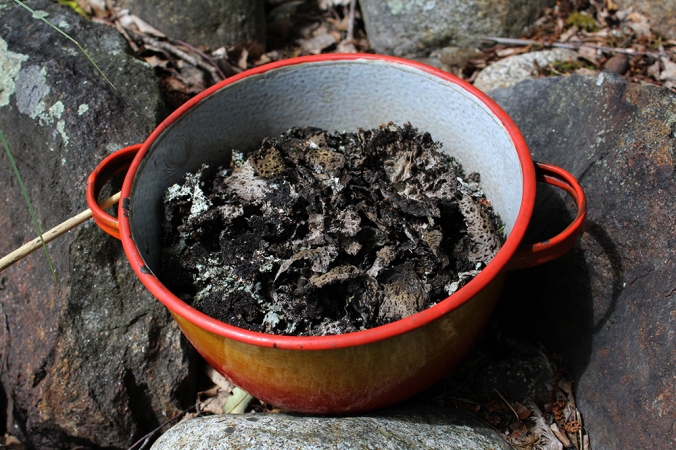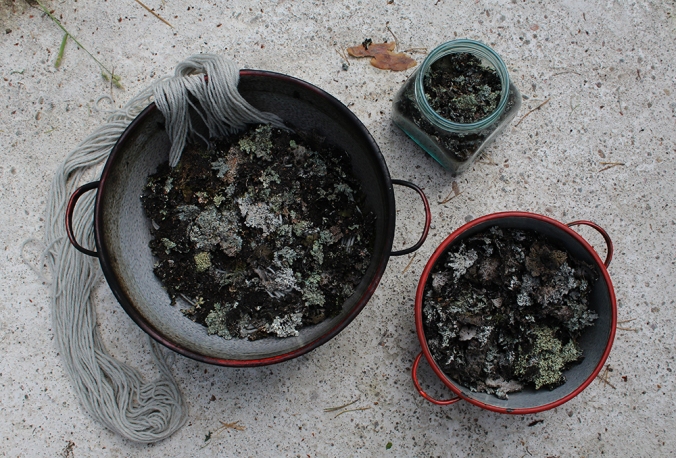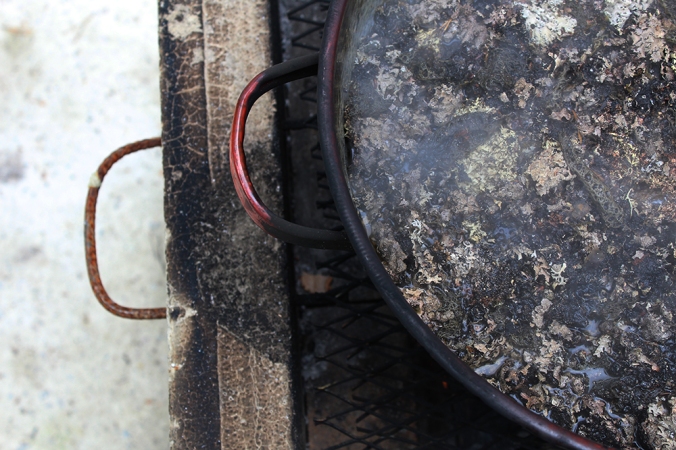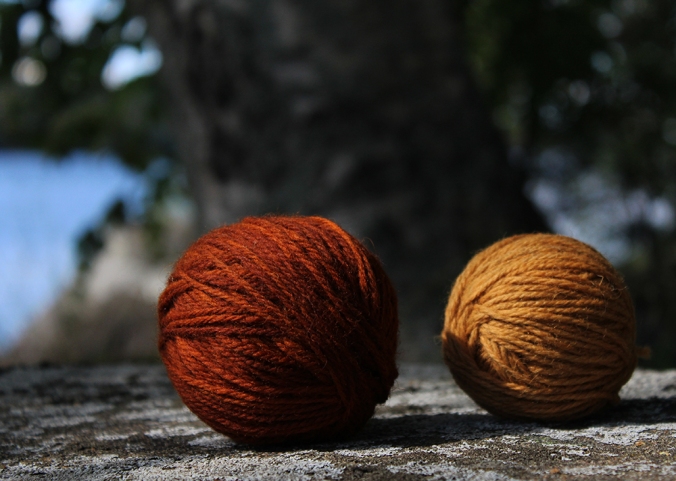
I did some pine cone dyeing this week. There are over 100 different species of pines in the world. In Finland we have just one naturally growing one (Pinus sylvestris). This was my first time trying out dyeing with any kind of cones, but reading about it, I feel that most cones act the same. They give brownish/pinkish/reddish tones.

I found a lot of information about dyeing with spruce cones, but not so much about dyeing with pine cones. I figured they cant be that different. Most instructions say that the cones from last year that have been laying under the snow the whole winter give the best colour. Well thanks to global warming last winter was the first one in my lifetime that we did not have snow at all in Helsinki. But anyways I thought how on earth I will know in August which ones are old and which ones are new?

I let the cones soak in water for one day and then started cutting them to pieces. I think this was a good idea as they got a lot softer. I also noticed that some of them where a lot lighter and others a lot heavier and sank at the bottom. Others where mushy and brown and others hard and red in the middle.

I found an interesting PDF of an old Finnish dyeing book from 1919. In it Alina Hellen says about spruce cones that: “You will get grayish red from them. The cones are collected during spring and summer. Preferably they should be the ones that have fallen out of the trees last year and have been laying over winter in wet places and because of that they have stayed hard and smooth. They should be dark brown/reddish and juicy from the inside.” She was talking about the spruce cones but I used this as my guide line and only used the ones that had red in the middle. I think it makes sense that that’s where the dye is.
Alina Hellen, 1919, Kotivärjäyskirja; Neuvoja kotivärjäykseen kasviaineilla. Suomen käsityön ystävät. KVS:n Käsiteollisuuskirjasto N:o 13

Cutting the cones into pieces was a lot of hard work and I should have had proper tools for this (like garden scissors). My thumps hurt a lot the next two days. This was definitely one of the most labor intense dyeing things I have done.

I boiled the cones for almost four hours. Normally I only do two hours, but hard stuff like cones need a little more time. The smell is so good by the way! I wish someone would make a boiling wood perfume. Looking back I probably should have had a bit lower temperature. I lost quite a bit of dye. And I could have left the cones to soak in the dye bath until the dye was cold. But I wanted to start the dyeing process.



I invested and finally bought some muslin cloth. It really is a good idea to use it to do the sieving. All this small mush that goes through a normal sieve could make the dye result uneven. I also cleaned the pot at this point.

The dye itself was a dark brown with a reddish tint.

I dyed my cotton fabric for one hour and let it cool in the pot. The next day I used the same dye for a second time for another patch.

The end results where beige light brown colours. The bottom fabric was a different fabrics. The rest where an old cotton sheet. I think the bottom one is mostly cotton, but I think its mixed with some kind of synthetic fiber. I was surprised how well it took the colour.

The interesting thing was that there was no difference between the mordanted and unmordanted fabrics. I’m guessing that the cones have natures own tannin and don’t really need mordanting.

All and all beautiful colours, but a lot of work. I do think there might be an easier way of getting lovely browns…. In 2014 I dyed with juniper bark and I think that was a lot easier. You can read about it here. I have also dyed with walnut hulls, although that was a long one month soaking. You can read about it here.
